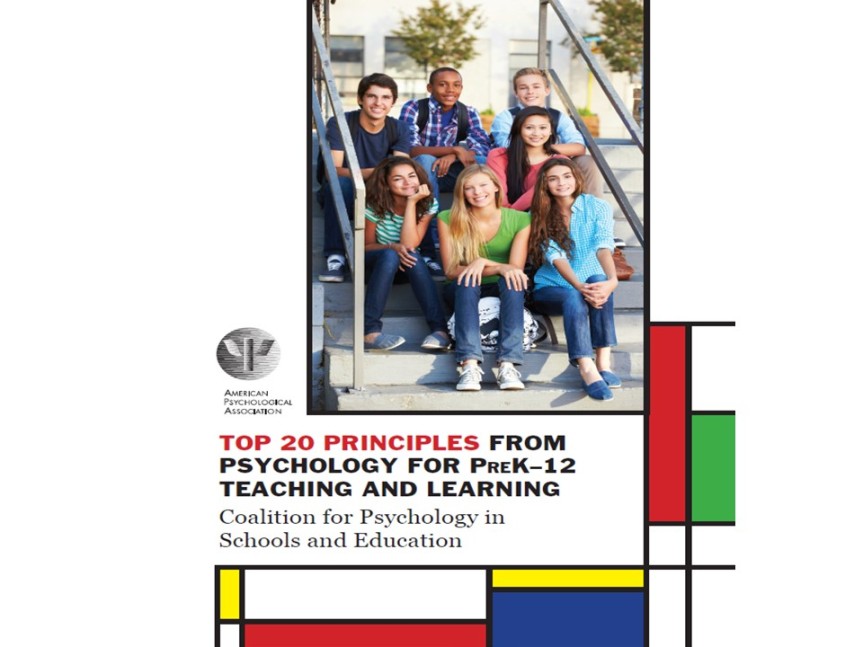In 2002, the American Psychological Association formed a coalition for psychology in schools and education. Together they identified 20 key principles for teaching and learning (2015). While the document itself is really straightforward, it is quite lengthy, so I’ve simplified each principle with some practical suggestions for readers of this blog. Much of this is common sense, so there are no ‘game changers’, but it might help to reinforce some of the things we should be attempting to do in our classrooms. This is part 1 of 3:

Part 1 – Principles 1-6: How do students think and learn?*

*I have purposely omitted Principle 7 and 8 from this post. I will be writing about meta-cognition (7) in a post in the next few weeks and the ‘fostering creativity’ principle (8) is ambiguous and weak.


Hi Dan – I had a crack at this last year. Did you read any of these posts? http://www.learningspy.co.uk/psychology/top-20-principles-from-psychology-for-teaching-and-learning/
Yes, thanks David. I remember the series well – a detailed critical analysis of each section. I had a look at a couple earlier actually. I was relieved to see that you too found principle 8 poor – I just wasn’t getting it!
I’ve opted for a different position by dumbing it’s application down. Probably too much, but trying to get more teachers accessing the literature.
Thanks for reading anyway and hope you’re well?
Thanks for this post! I’m looking forward to the rest! But so good of you to summarise it all for us all! There are so many good & useful publications out there, and us teachers can’t read them all, so I’m always glad of this kind of post !!
You’re welcome.
Reblogged this on The Echo Chamber.
#1 gives the list a strong start. i am never just teaching computers, i am working against the common misconception that everyday people are unsuited to learn. changing the lesson helps, but challenging the doubt is necessary.